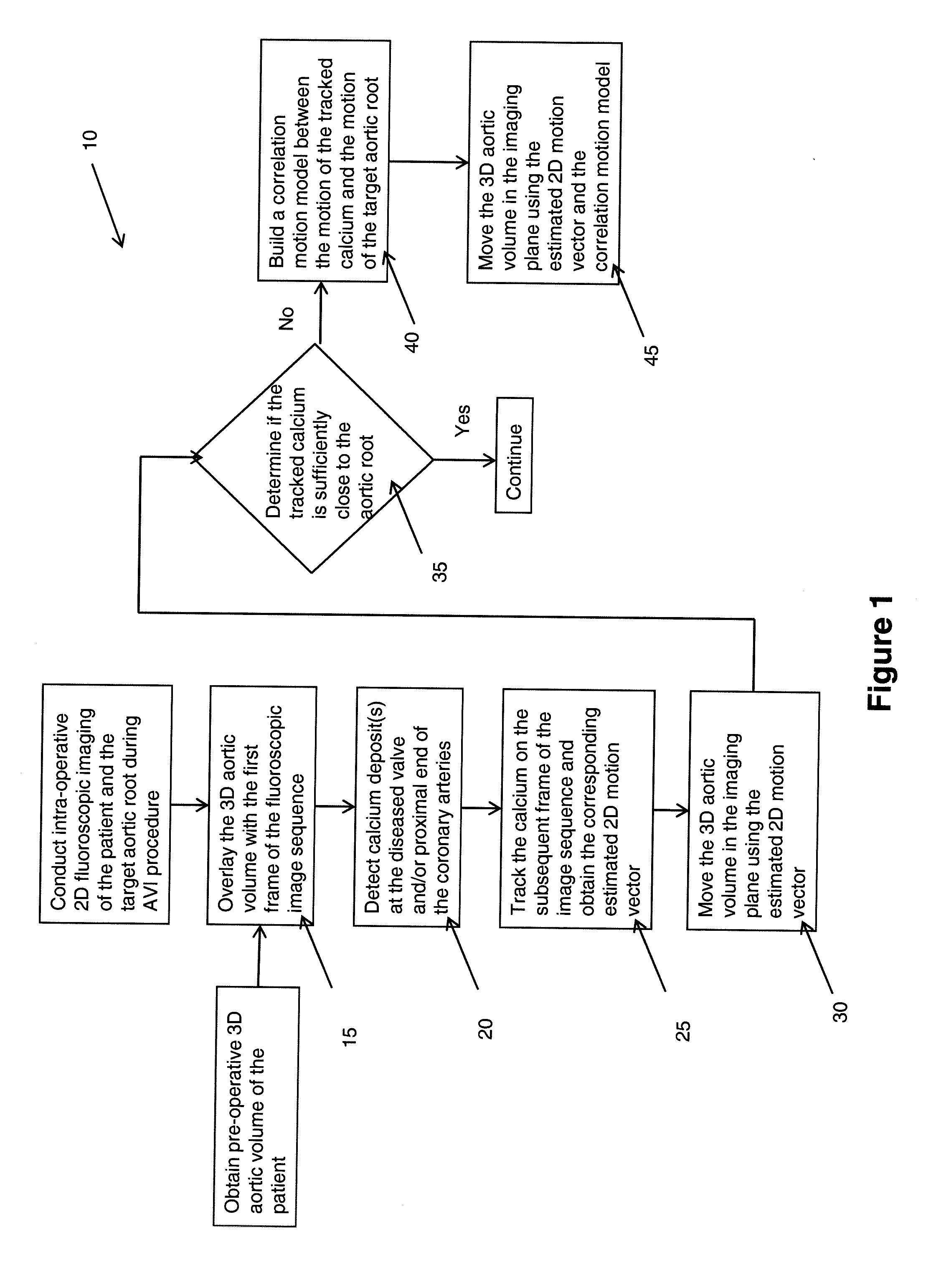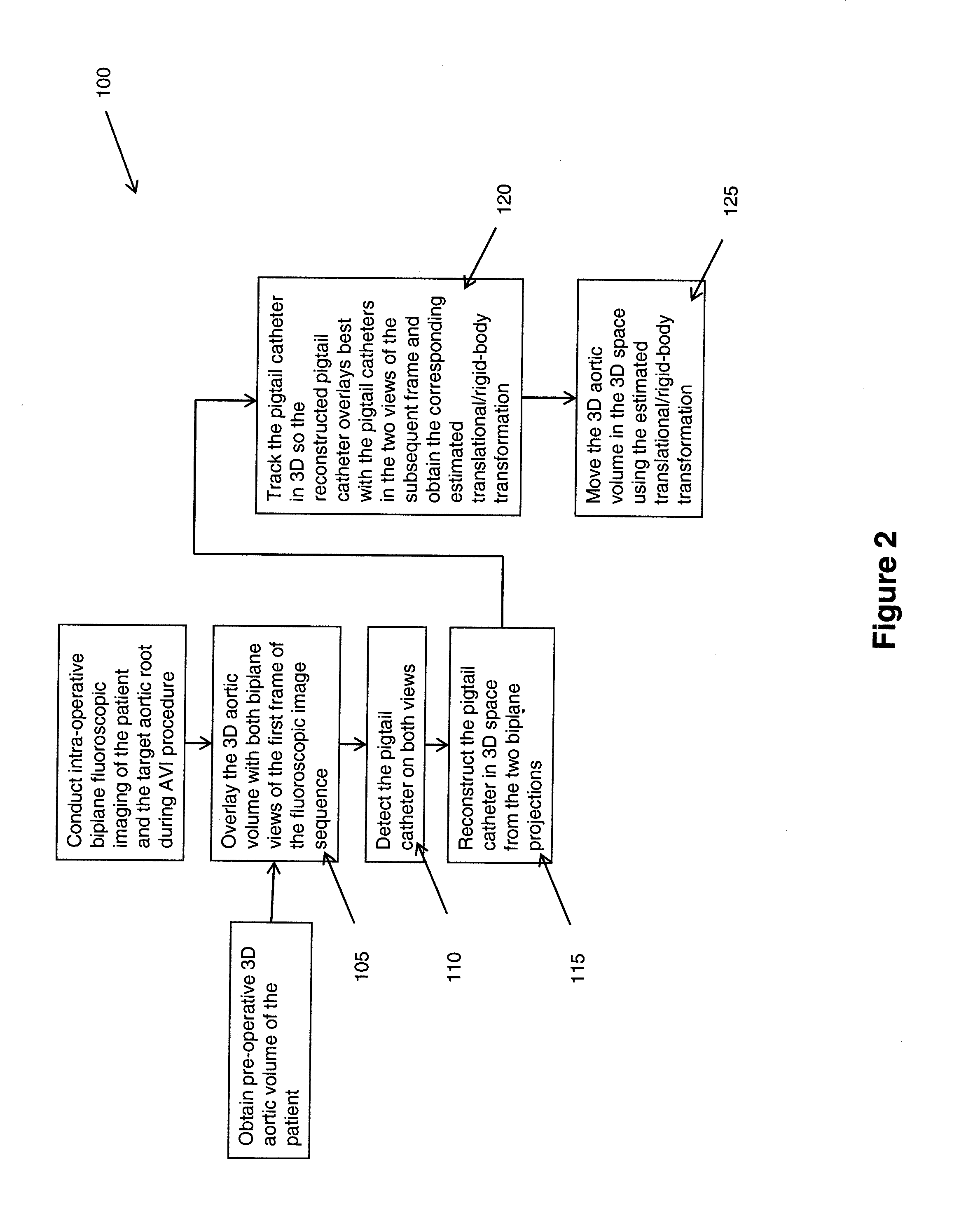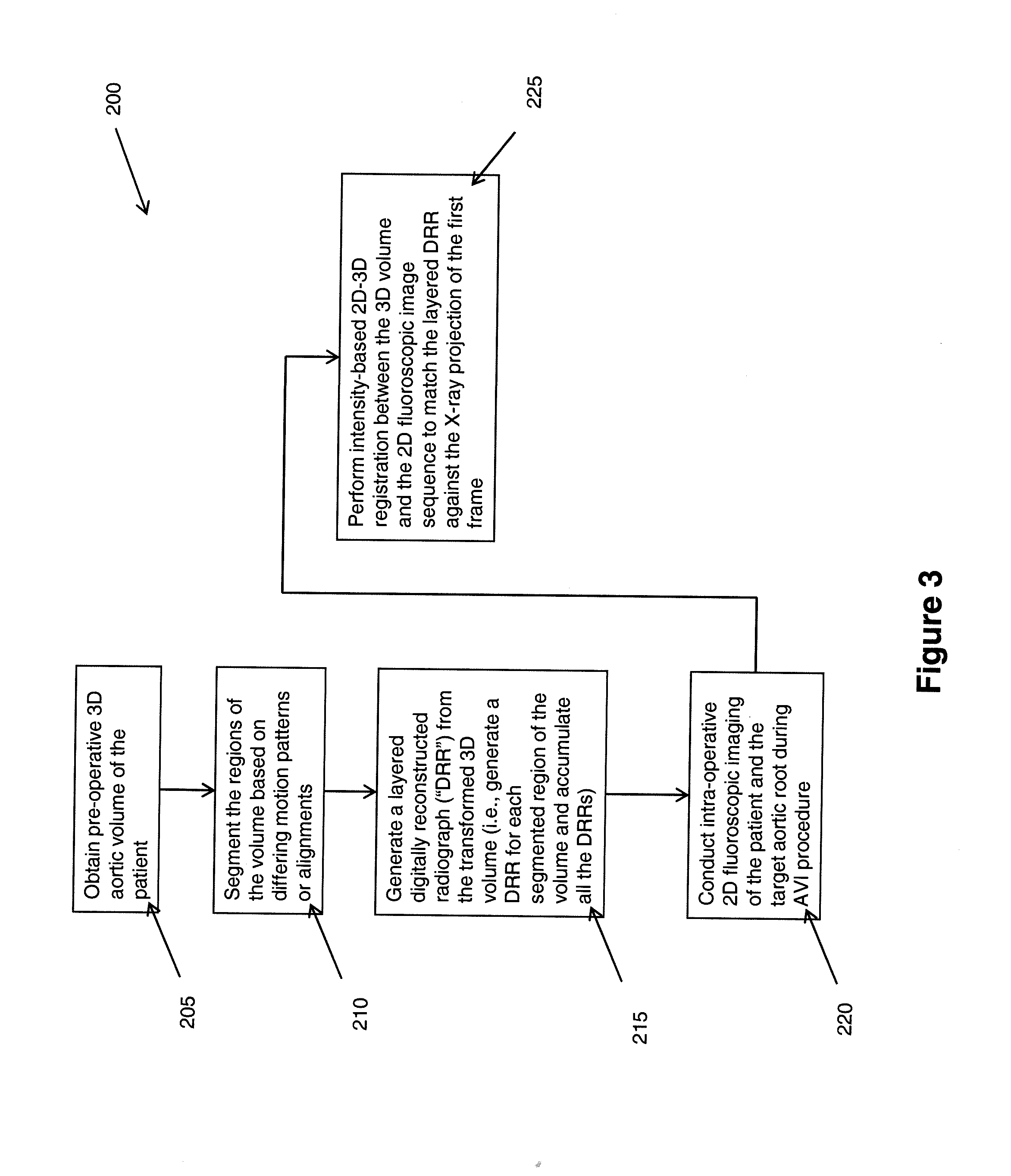Method of motion compensation for trans-catheter aortic valve implantation
a technology of aortic valve and motion compensation, applied in the field of cardiac imaging, can solve the problems of static fluoroscopic overlay techniques, inability to distinguish soft tissue in 2d x-ray projection images, and increased cost compared to image-based localization
- Summary
- Abstract
- Description
- Claims
- Application Information
AI Technical Summary
Benefits of technology
Problems solved by technology
Method used
Image
Examples
Embodiment Construction
[0021]The present invention provides several methods to compensate for cardiac and respiratory motion for cardiac imaging. The methods are particularly directed to compensate for cardiac and respiratory motion during minimal invasive (e.g., trans-catheter) AVI procedures by image-based tracking on fluoroscopic images. The methods are implemented with the assistance of the imaging system and its visualization and computing capabilities. As noted above, minimal invasive AVI procedures, like other complex non-invasive cardiac interventional procedures, are routinely guided by an X-ray coronary angiography system. Generally, a medical professional inserts an appropriate catheter into a blood vessel of the subject patient and advances the catheter to the target site (i.e., the aortic root, which is the outflow tract from the left ventricle to the aorta) to perform the desired interventional actions. To assist in the visualization for the AVI procedure, the medical professional utilizes t...
PUM
 Login to View More
Login to View More Abstract
Description
Claims
Application Information
 Login to View More
Login to View More - R&D
- Intellectual Property
- Life Sciences
- Materials
- Tech Scout
- Unparalleled Data Quality
- Higher Quality Content
- 60% Fewer Hallucinations
Browse by: Latest US Patents, China's latest patents, Technical Efficacy Thesaurus, Application Domain, Technology Topic, Popular Technical Reports.
© 2025 PatSnap. All rights reserved.Legal|Privacy policy|Modern Slavery Act Transparency Statement|Sitemap|About US| Contact US: help@patsnap.com



